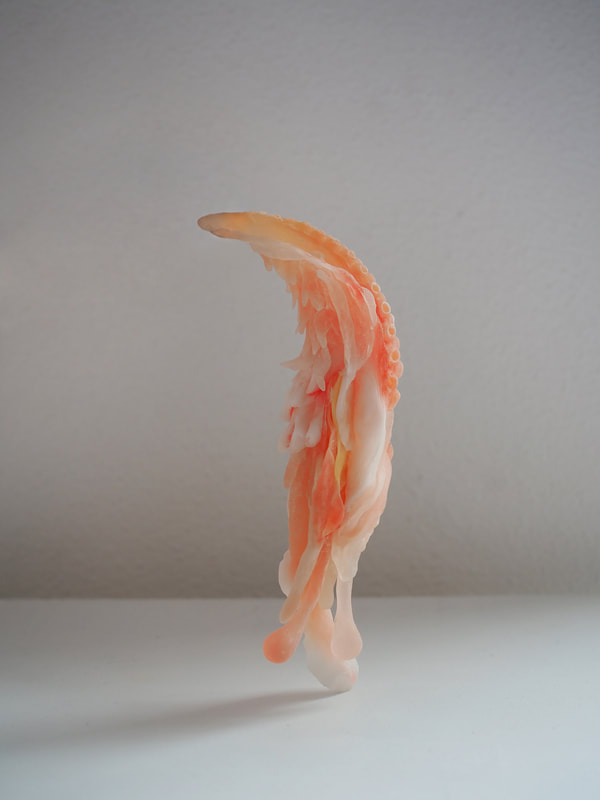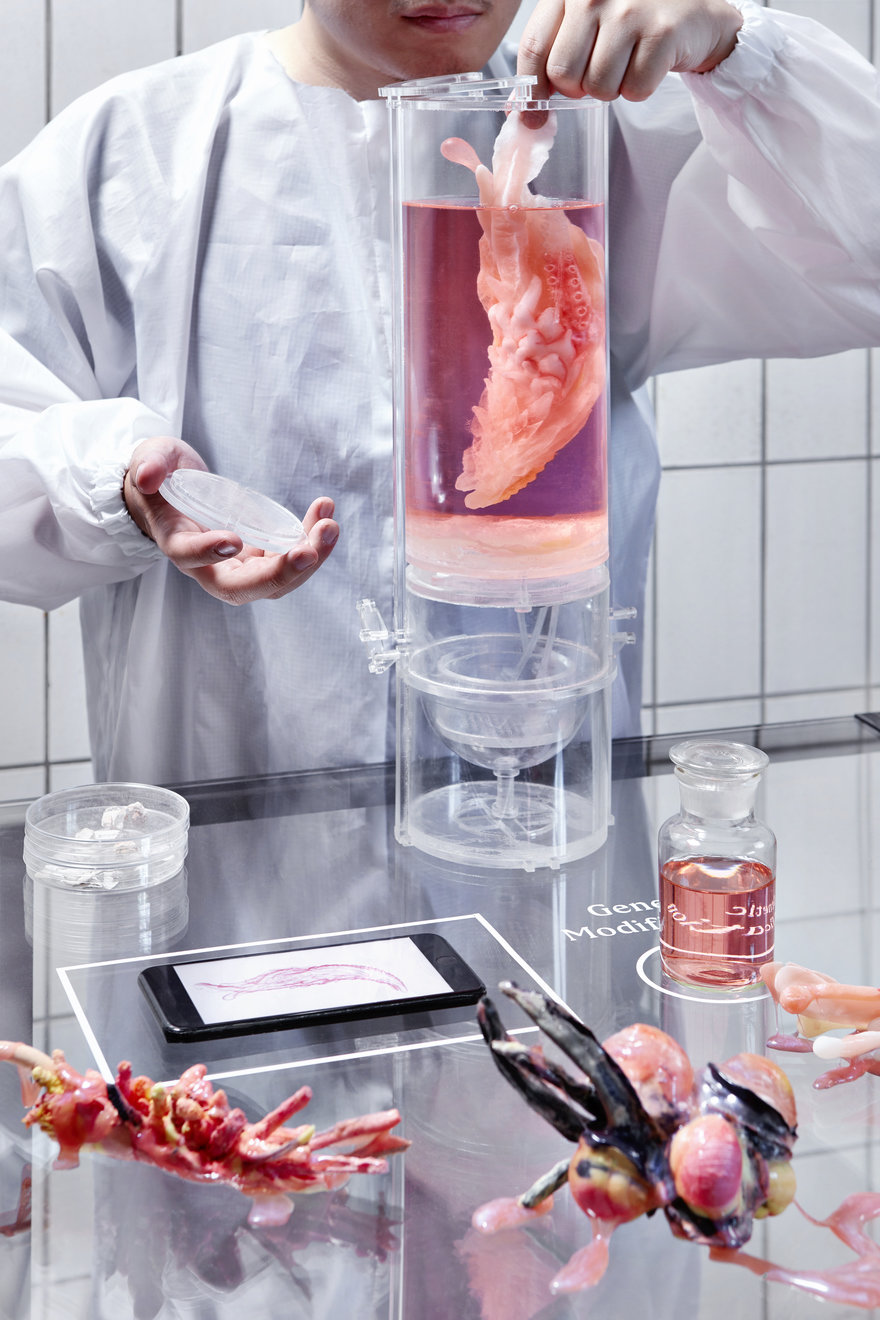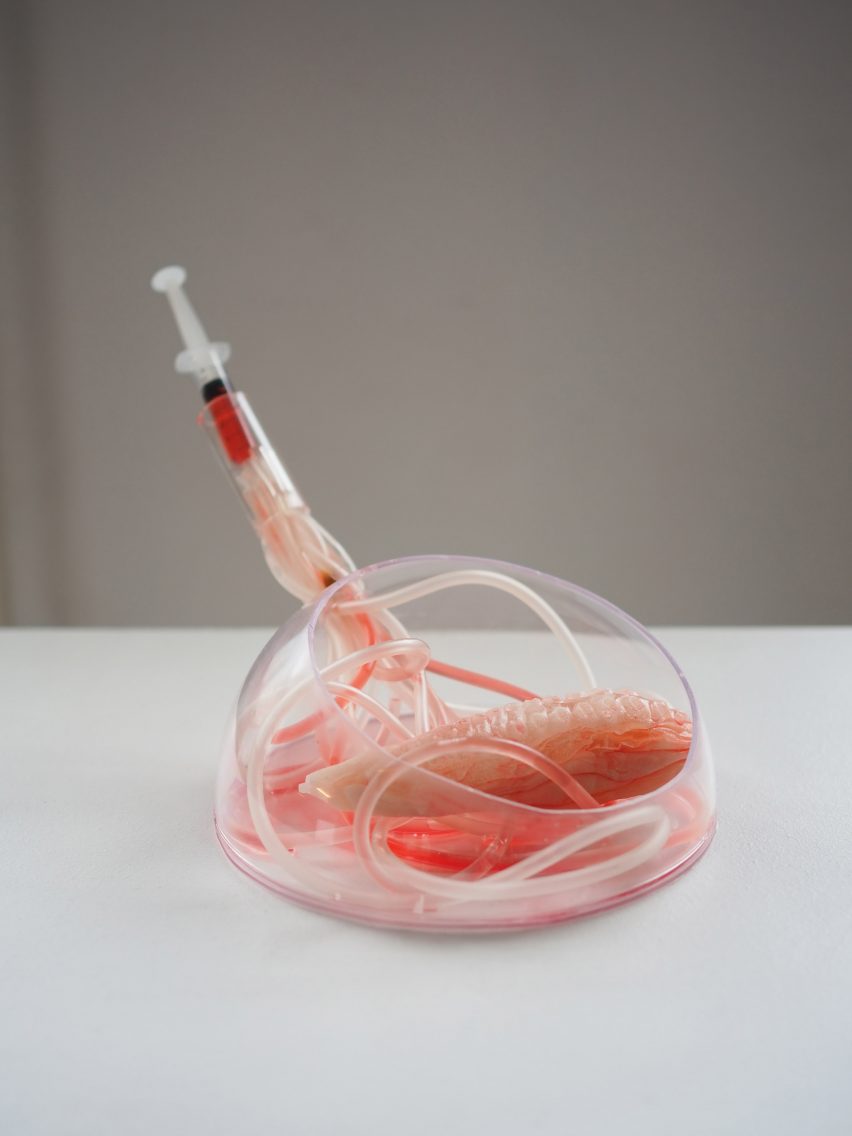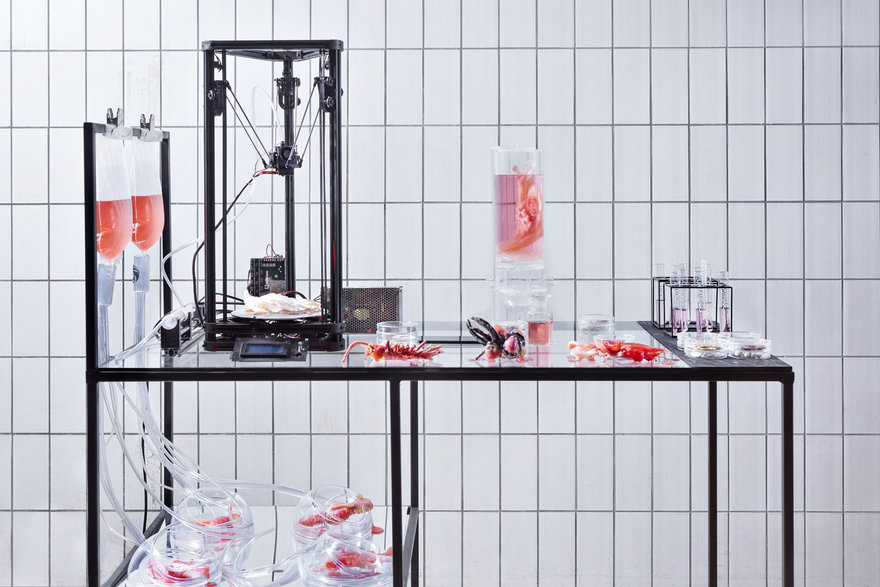Various cultures around the world have developed their own alternative systems of medicine that have passed on for generations down the line. Practiced in many parts of the world, these alternative forms of medicine are often considered cultural myths since their effectiveness cannot be proven using contemporary scientific analyses. One such long-standing alternative practice can be found in Traditional Chinese Medicine (TCM), where the genitals of a male tiger are consumed with the promise of increasing virility. Regardless of the effectiveness of this method, the huge demand for wild animals in TCM has posed to be a cause for concern for endangered species. Yet, TCM is still widely practiced owing to the benefits that remain inconclusive to western medicine, but useful to those who engage with it. With the Tiger Penis Project, Kuang-Yi attempted to resolve the long-standing conflict between health, culture and environmental conservation by reinterpreting Traditional Chinese Medicine through the lens of advancing technology.

Originally from Taiwan, Kuang-Yi Ku was a practicing dentist before he decided to develop his career as an artist and designer. He doesn’t mind being called either a dentist, bio-artist, or speculative designer, molding himself to the environment that presenting in, caring more about the essence of his projects rather than the title for his work. Kuang-Yi’s off-beat journey leads him to his interest in envisioning a medical practice interspersed with disciplines such as artistic practice or design methodologies to create new, interdisciplinary solutions for the coming generations. “I think the main reason that I'm interested in this topic is that when I was in medical school, I did see there was a limitation of scientific research and medical research because we don't ask the ethical, social, or cultural questions to the teacher or professor, and we only focus on the practical value of the medicine itself. However, the medicine contains so many issues because it's related to our health and body and has so many cultural layers which stand behind the medicine itself. So that's why I tried to look for another possibility, by combining new methodology into medicine.” Graduating from the Design Academy Eindhoven in 2018, his love for both the arts and sciences took shape as the Tiger Penis Project.
Medicine contains so many issues because it's related to our health and body and has so many cultural layers which stand behind the medicine itself.
Using design as a tool to explore new possibilities for Traditional Chinese Medicine, the Tiger Penis Project attempts to bridge the knowledge gap between western and alternative medical practices by employing biotechnology. “Some of the medication and remedy of Chinese medicine does need to use certain herbs or animal parts as ingredients for the patient, and some of the ingredients in the medical book are from endangered animals or endangered plants so it caused a severe conflict between protecting endangered species and preserving traditional Asian medical heritage. I find it's interesting because in this conflict we want to save endangered animals or endanger living things, for sure, because we want to protect the planet that we are living in. However, according to my cultural background, I'm living in an environment that's consuming these as Chinese medical products such as the remedy of rhino horn, tiger penis, and some other animals.” Akin to the processes of growing cultured meat, the project attempts to recreate necessary animal parts used in TCM by using the DNA of the animal and the powers of 3D printing with modern biotechnology.
Akin to the processes of growing cultured meat, the project attempts to recreate necessary animal parts used in TCM by using the DNA of the animal and the powers of 3D printing with modern biotechnology.

Kuang-Yi admits that the project was a learning experience for him too as he did not believe in the effectiveness of TCM when he started. Consulting doctors of traditional Chinese medicine, he found out that not all of it was unproven: “there are three different kinds of ingredients that are prescribed. The first ingredient, the herbs or the animal part was recognized in a traditional medical book in China. So for example rhino horn, you can find this in a medical book of Chinese medicine and you can also use modern scientific research methods to prove it. It's working, it's effective. For instance, you can find a specific chemical compound in rhino horn that is good for the health or a specific disease. The second one you can find in the medical book of Chinese medicine, but you cannot use scientific research to prove it. Because you cannot prove it, there is no specific ingredient or specific chemical compound in it, but the Chinese medical doctors still prescribe it because according to the medical book, the Chinese medical theory. And the third category is something you cannot find anything about in the medical book of Chinese medicine and you cannot prove it scientifically either. In that case, it's a purely cultural myth; for instance, tiger penises, are a good example.”
Kuang-Yi is attempting to tie together the ethical and scientific loose ends by recreating artificial animal parts.
With this knowledge, Kuang-Yi is attempting to tie together the ethical and scientific loose ends by recreating artificial animal parts that could serve as medicine but, also aid in propagating further research into, especially since no animals would be harmed in the process. But he doesn’t end there: “I propose to hybridize, tiger and octopus and all these animals that represent a certain cultural value of sexuality in different cultures or continents and use biotechnology to combine their DNA into one cell and put it in a cell into tissue culture and 3D bioprinter and print artificial hybrid penises, which should be culturally stronger than tiger, so I'm more like using biotech and design to develop a super culture, a strong aphrodisiac.” His aim with this project is not limited to TCM but, to incorporate and provide a pathway for various traditional, alternative medicinal practices to preserve and continue their cultural practices. He believes that in doing so, this might also open up the possibility of combining western and traditional medical practices: “I started to believe in that it's not binary to choose a specific medical system, like Chinese medicine or western medicine or alternative medicine or mainstream medicine. It's more that you need to find a collaborative way, we should work together between different medical systems and not choose from a binary situation.”

We should work together between different medical systems and not choose from a binary situation.
A factor commonly associated with alternative medical practices is its relation to one’s diet, either by incorporating the medicine into it or by altering one’s diet while taking the medication. Kuang-Yi explains that culturally, there is little differentiation between medicine and food in the Mandarin language as that which can be found in English. “Sometimes we buy the herbs or the animal parts back to home you bought it from a medical shop of Chinese medicine, but you went back to home, actually, your grandma, your mother or your father cooked it as a soup to serve in the dinner. But how can you call it? Is it food or dinner? It's medicine because by the ingredient, the herbs, these things from the medical shop, it's not a supermarket.” Blurring the lines between health and personalization, Kuang-Yi’s project has multifold aims, from a scientific perspective to bring more legitimization to traditional medicine, yet from a cultural perspective to protect a long-standing tradition, while also keeping in mind the ethical issue of preserving endangered species. His vision for this project remains complex, but not impossible to achieve, placing a hybrid medical clinic that is accessible via a holistic supermarket.
This interview was conducted as part of the research for the Embassy of Food 2021. Curators Annelies Hermsen and Chloé Rutzerveld selected seven projects and spoke with the makers designers about technology, food waste, health, education, protein transition, non-food and packaging. Collaborating with Next Nature Network, these interviews were edited and published. The Embassy of Food is made possible in part by the DOEN Foundation, Prince Bernhard Cultuur Fonds, Albert Heijn and the Dutch Design Foundation.

Share your thoughts and join the technology debate!
Be the first to comment